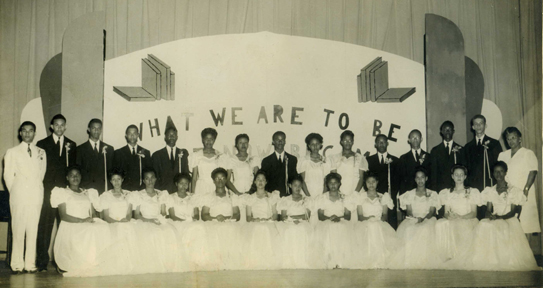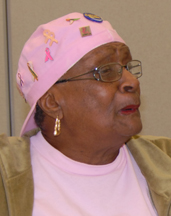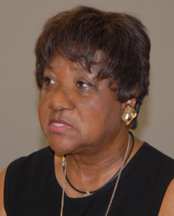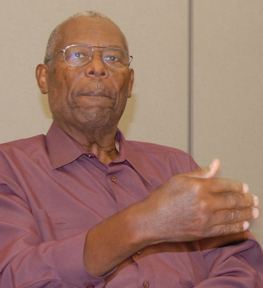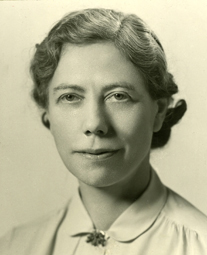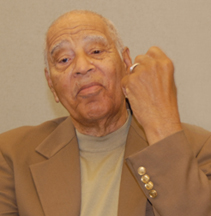

The Southern Demonstration School Community |
||||||||||||||||||
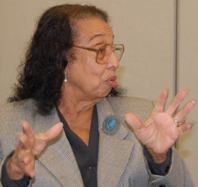 Audrey Nabors-Jackson “Whoever you were, wherever you came from, if you were admitted to Southern High, then you were part of a family.” Audrey Nabors-Jackson |
||||||||||||||||||
“The school was defined by the administrators, teachers, and students who were there. We were a close community, centrally located for most of us, a camaraderie of students. The teachers taught us but they also led us by example since so many of them lived in the area as well. We saw them in the community where we could develop a personal relationship
with them. This had its benefits . . . .
but also some concern—there was very little we could do without it getting back to our parents.” John B. Cade |
||||||||||||||||||
from Secondary School Study documents: "Southern University Demonstration School, located on the campus of Southern University, is the practice school for this university. Its enrollment in grades 1 through 11 is 300. About half of these pupils are in high school. These children come from Scotlandville, Baton Rouge and other communities within a radius of 25 miles of the school. The entire faculty consists of 13 teachers with 8 teachers in the high school. The regular staff is augmented by college teachers and practice teachers on a part-time basis. The school is accredited by the regional association."
Note: The school was founded in 1922 and named the Southern University Model Training School. The title was changed in the 1930s to the Demonstration School and, for this exhibition and during the time of the Secondary School Study, this name was used. At a later date, the “Southern University Laboratory School” title became the official designation. Throughout the oral history interviews Demonstration School and Laboratory School terms are used interchangeably.
|
||||||||||||||||||
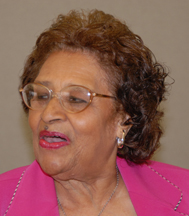 Gloria Murray Handy “The Southern High School developed a family setting that established a wonderful sense of community. Classes were always small and the teachers could better attend to us individually. And they did!” Gloria Murray Handy |
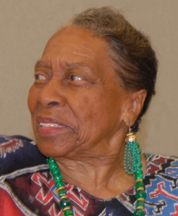 Lena Armstead “The Lab School created a strong sense of community. The school was special and made us feel special.” Lena Armstead |
|||||||||||||||||
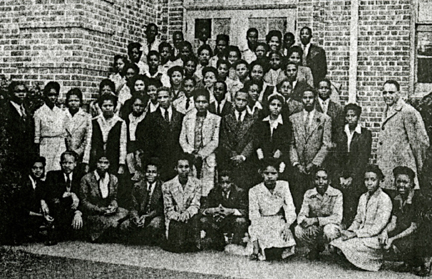 |
||||||||||||||||||
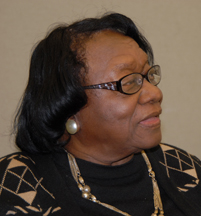 Sedonia C. Johnson |
“We were a small school with a sense of community—a close-knit family. Some had much; some had little. But we all worked hard and knew that it was a special opportunity for us to attend Southern High. The school did not have students compete against one another. We stood together.” Sedonia C. Johnson |
|||||||||||||||||
“We were village-raised children. ‘It takes a village to raise a child’ was the work of the entire community. The teachers would encourage when needed, chastise if warranted, and love with abundance. As a result we became more dedicated to our studies. The teachers always focused on us, meeting our goals and objectives individually and collectively.” |
“The Lab School students were part of this larger university community, and the exposure to the many cultural events and activities of the university made the Demonstration School so special. Teachers drew upon these resources and integrated the events into our curriculum.” |
|||||||||||||||||
|
||||||||||||||||||
|
||||||||||||||||||
Report to the Secondary School Study on a Visit by Margaret Willis, Ohio State University “The location is practically ideal for a demonstration school, convenient to the university and close to the university farms with all their animals and growing things. The lake, the trees, the playing fields make a perfect setting. the faculty not only is a highly qualified group academically but also has to a high degree the personality qualities which are necessary for the development of a strong program. They appear to like the children and to like each other; they are open-minded and seek criticism; and they are willing to work very hard. The relations between the staff and the education faculty seem to be good. Southern University is in a strategic position to be of great influence in the schools of the state, both through the training of student teachers and through the re-education of teachers in service.” from the Demonstration School Commentator, Vol. 1, No. 1, April 22, 1942
|
||||||||||||||||||
“The school was good for the community. There were many children in Scottlandville who would not have gone to school if it was not for the Lab School. The school offered opportunity and hope to many children who couldn’t go downtown to attend school.” |
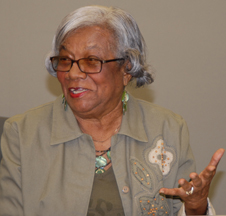 Lee Ethel Gray Patty |
|||||||||||||||||
|
“Every teacher was the teacher of every student. It didn’t matter that you were in the first or second grade or high school. Any teacher would correct your grammar, any teacher would discipline you, any teacher would call you in and give you a lecture on bad behavior or poor performance; any teacher would do this because every teacher cared about you." from Dr. Perkins’ 75th Anniversary statement, Great Teachers Made the Difference |
|||||||||||||||||

an institutional member of the International Coalition of Sites of Conscience
Museumofed@gmail.com

